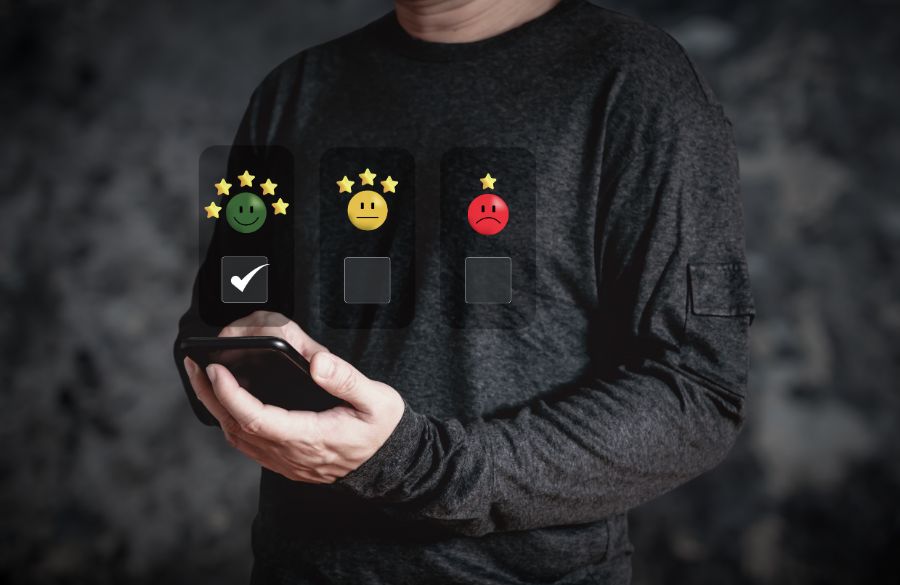As the marketplace becomes increasingly crowded, brands that stand out are those that offer distinctly personalized experiences. Consumers now expect interactions that are tailored specifically to their preferences and behaviors. Implementing a personalized recommendation system is more than a competitive strategy; it is essential to meet modern consumer demands. This blog post presents effective practices for deploying personalized recommendation systems, driving engagement, and boosting conversions while surpassing customer expectations.
What is a Personalized Recommendation?
Personalized recommendations are customized suggestions offered to individuals based on their unique preferences, behaviors, and historical interactions. This technique is particularly prevalent in e-commerce, where online stores leverage data like browsing history, purchase patterns, and demographics to make tailored product suggestions.
These recommendations are typically generated using sophisticated machine learning algorithms that sift through vast datasets to predict products that users might find appealing. The objective is to improve the user experience by making interaction more engaging and intuitive, which, in turn, can significantly enhance conversion rates.
4 Common Types of Personalized Recommendation
Personalized recommendations are a cornerstone of modern e-commerce strategies, enhancing user experience and driving sales.
The 4 popular types that you can consider are:
- Recently purchased and viewed
This type reminds customers of their recent interactions with your brand, including purchases and product views. It’s particularly effective for items that are frequently repurchased, such as consumables.
By reminding customers of their past activities, this strategy not only keeps your brand top-of-mind but also facilitates easy reordering with just a few clicks, deepening customer-brand relationships.
- Most popular recommendations
When faced with a multitude of choices, customers often appreciate guidance on what to buy. Most popular recommendations leverage the power of the crowd by showcasing top-selling or most-viewed items.
This approach simplifies the shopping process by narrowing down the options and also instills a sense of confidence in customers about the popularity and quality of the products, thereby aiding in quicker decision-making.
- Bought-together recommendations
Often seen as “Customers who bought this item also bought,” these recommendations suggest products that are frequently purchased together.
This tactic encourages additional purchases by presenting complementary or related items, potentially increasing the average order value and enhancing the overall shopping experience. It taps into the powerful principle of social proof, suggesting that others’ choices could be right for the new buyer as well.
- Automatic recommendations
These are powered by machine learning algorithms that analyze a user’s behavior, preferences, and past interactions to generate real-time, personalized suggestions.
Unlike static types of recommendations, automatic recommendations adapt continuously to changes in user behavior and market trends. This dynamic approach ensures that each user receives the most relevant and personalized product suggestions, enhancing the likelihood of conversion.
Benefits of Personalized Recommendations in E-commerce
Personalized recommendations play a crucial role in enhancing the e-commerce shopping experience and driving business success. Here are some advantages that these recommendations bring to e-commerce:
- Reduce the rate of abandoned shopping carts
Within e-commerce, the cart abandonment rate serves as a critical measure that significantly influences business performance. The implementation of personalized recommendations on the cart page has proven to be highly effective, leading to a noticeable decrease in cart abandonment rates by 4.35%. Customers abandon their carts for various reasons, including distractions and unmet expectations.
Imagine a scenario where a shopper initially plans to purchase a scarf but actually seeks a winter bundle containing gloves and a hat. Without personalized product suggestions, navigating through subsequent categories becomes cumbersome, thereby escalating the likelihood of cart abandonment with each additional step.
- Boost the Average Order Value (AOV)
Personalized recommendations serve as a catalyst for revenue growth by significantly influencing a customer’s total cart value. They present tailored cross-sell and up-sell opportunities that capture the customer’s interest, leading to additional purchases beyond their initial intent.
Data reveals a stark contrast: sessions lacking engagement with product recommendations yield an average order value (AOV) of $44.41. In contrast, when customers interact with just one recommendation, this figure skyrockets by 369%, underscoring the profound impact of personalized recommendations on revenue generation.
- Extend session duration
Extending session duration is another key benefit of personalized recommendations. By providing users with personalized product suggestions that align with their interests and preferences, businesses can prolong customers’ time on their website or app.
This increased engagement not only enhances the user experience but also provides more opportunities for businesses to showcase their products and convert browsers into buyers.
- Differentiate from competitors
As we approach the end of 2020, it’s anticipated that online spending in the U.S. will reach around $375 billion, with projections indicating a surge to over $476 billion by 2024’s conclusion. This remarkable growth in online commerce has led to a constant influx of new e-commerce ventures.
However, amid this rapid expansion, a notable challenge arises: the need to maintain individuality. With an abundance of choices available, consumers now have the privilege of selecting which stores to engage with based on their desired shopping experiences. Personalization emerges as a paramount concern, as evidenced by 80% of consumers expressing a preference for companies offering personalized interactions, which significantly influence their purchasing decisions.
ConnectPOS, a leading provider of point-of-sale solutions for e-commerce businesses, can leverage personalized recommendations to further enhance its offerings. By integrating personalized product suggestions into its system, ConnectPOS empowers retailers to deliver tailored recommendations to customers both online and in-store. This supports retailers in increasing sales, improving customer satisfaction, and staying ahead of the competition in today’s dynamic e-commerce market.
Best Practices To Roll Out Personalized Recommendation For Your Brand
Implementing personalized recommendations for your brand requires careful planning and execution to ensure effectiveness and success. It’s not solely about “what” you showcase; equally important are who you’re targeting, “when” and “how”.
These key practices ensure the effectiveness and success of your personalized recommendation initiatives.
Accurately identify and understand your audience
The foundation of effective personalized recommendations is a deep understanding of your target audience.
Start by gathering and analyzing data on your customers’ preferences, behaviors, and purchasing habits. Use this data to segment your audience into distinct groups based on factors like demographics, browsing history, and previous purchases. Tailoring your recommendations to these segmented groups enhances the relevance and impact of your suggestions, making them more likely to resonate with each customer.
Continuously test and optimize your strategies
Personalization is not a set-it-and-forget-it solution. To maximize its effectiveness, you need to continuously test different aspects of your recommendation system.
Implement A/B testing to compare the performance of various recommendation algorithms and presentation styles. Use multivariate testing to experiment with different elements simultaneously. Regularly analyze performance metrics to understand what’s working and what isn’t. This ongoing testing and optimization process helps you refine your approach and adapt to changing consumer preferences and behaviors.
Leverage the right technology and tools
Utilize advanced machine learning algorithms and data analytics tools to process and analyze large volumes of customer data effectively.
These technologies can help identify patterns and insights that human analysis might miss, enabling more accurate and dynamic personalization.
Integrate recommendations across multiple channels
Ensure that personalized recommendations are not siloed within one channel but are integrated across all customer touchpoints. Whether it’s through email marketing, on the website, or within a mobile app, consistent personalized experiences across all platforms can significantly enhance customer engagement and satisfaction.
Respect privacy and build trust
While personalization can greatly enhance the customer experience, it’s essential to balance it with respect for customer privacy.
Be transparent about how you collect and use data, adhere to privacy laws and guidelines, and provide customers with options to control their personal information. Building trust is crucial for customer acceptance and success in personalization strategies.
FAQs: Personalized Recommendation
- What is an example of a personalized recommendation?
An example of a personalized recommendation is when an online retailer suggests products to a customer based on their browsing history, past purchases, demographics, or preferences.
For instance, if a customer has previously purchased running shoes, the retailer might recommend related products such as running apparel or accessories.
- How do personalized recommendations work?
Tailored recommendations stem from user data sourced from your website. The goal is to present your customers with products tailored to their interests and preferences, maximizing the likelihood of purchases. As the level of personalization increases, so does the quality of the user experience, fostering greater satisfaction and engagement.
- What is the difference between personalization and recommendations?
Personalization involves tailoring the user experience based on individual preferences, behaviors, and characteristics. This can include customized content, product suggestions, or marketing messages. Recommendations, on the other hand, specifically refer to suggesting products or content to users based on data such as browsing history, purchase patterns, or demographic information.
While personalization encompasses a broader range of customization efforts, recommendations are a specific aspect of personalization focused on suggesting relevant items to users.
- How do personalized recommendations work?
Personalized recommendations work by leveraging data analytics and machine learning algorithms to analyze user behavior, preferences, and past interactions. These algorithms process large amounts of data to identify patterns and correlations, allowing businesses to predict which products a user is likely to be interested in.
Recommendations can be based on various factors such as browsing history, purchase history, demographic information, and real-time behavior. By presenting users with tailored product suggestions, personalized recommendation systems aim to enhance the user experience, increase engagement, and drive conversion rates.
Conclusion
In conclusion, mastering the art of personalized recommendations is crucial for brands striving to thrive in today’s competitive landscape. By following best practices, such as understanding your audience and regularly testing your campaigns, you can tailor recommendations that resonate with your target demographic and continuously improve their effectiveness. Ultimately, personalized recommendations not only improve the shopping experience for your customers but also differentiate your brand, increase sales, and foster long-term customer loyalty.
If you’re ready to elevate your retail business with cutting-edge personalized recommendation systems, Let us help. Contact us today to discover how our solutions can transform your customer experiences and boost your sales.



